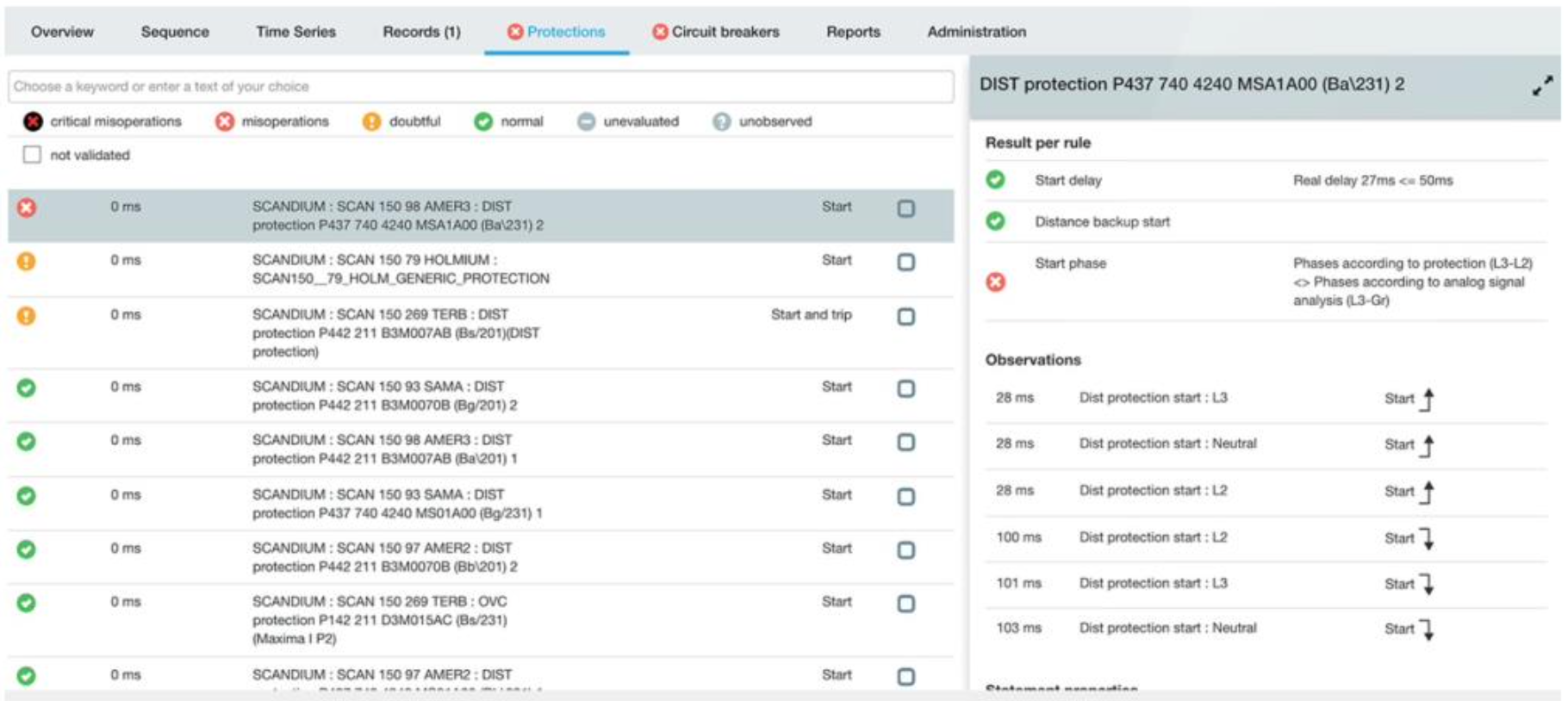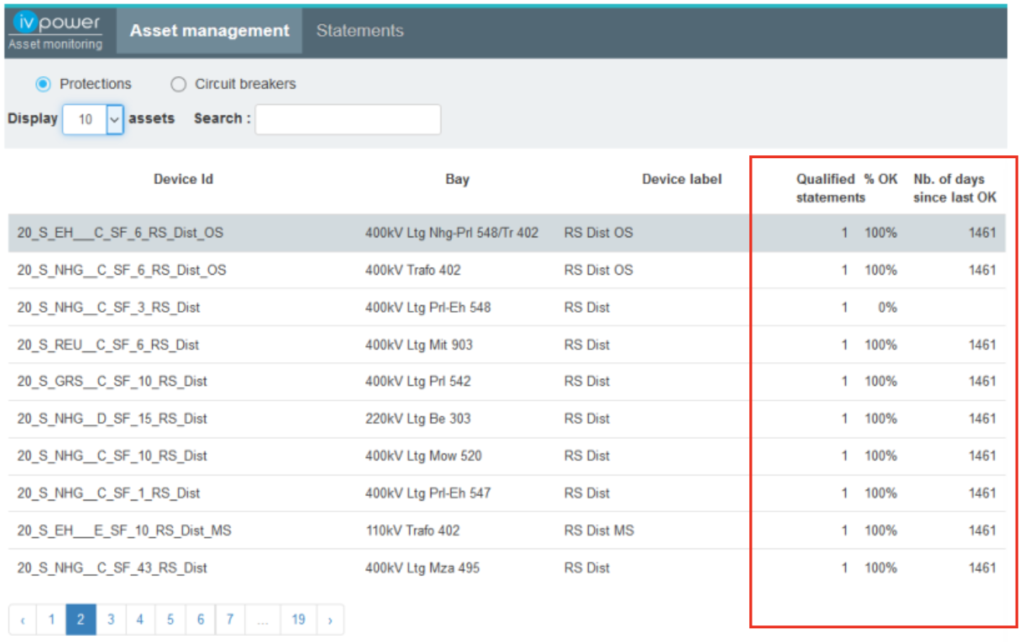Automated Report of the Protection Behaviour
IVPower software sheds light over all aspects of a disturbance event on a power grid: fault location and uncertainty margin, concerned phases, current, voltage and impedance values, automated conclusions to the operator, automated event timeline recreation, etc.
Even more, the observability on the event can be increased by status changes of process signals in the event logs, complementing the binary signals of the disturbance recordings. Altogether, they allow to evaluate the behaviour of protection relays and circuit breakers. Within a few minutes after a fault, IVPower provides crucial information to operators and precious data to protection analysts.

Protection Systematic Analysis
Systematic verification brings obvious value added: detection of unselective tripping, of dangerous operating conditions, of hidden failures which could cause damage or affect system stability… Also, there is an economy on the workforce, thanks to the avoided tests on correctly-working assets.
The Protection Performance module comes with a standard set of rules which is executed in near real time after the fault, based on the observed sequence of events.
Configuration is carried out by defining protection schemes associated to protected areas and by identifying the binary signals of interest in the COMTRADE records. Templates are used for similar protections, so that such configuration is facilitated and can even be automated.
Condition-based Maintenance
When a rule is applied to a sequence of events, either the rule criteria are validated (a green flag is issued in the GUI) or different types of anomalies are detected and flagged with an orange or red flag. Detection of miss-operation / suspicious behaviour is translated into an easy-to-interpret and actionable message to the users.
Therefore, analysts can steer their work according to the colour flags issued by the tool and can validate (or correct) these automatic reports: an historical database can be created, which will become, with time, usable for statistical analysis. Such database will allow each utility to optimize the maintenance of its assets.
Asset Management: Protection Statistic

On the reporting web page shown here, the user can select the device type (protection or breaker) and look for specific assets with a free-text entry form.
Columns show:
- Latest observed behaviour during an event
- Device ID
- Bay on which the device is installed
- Number of observations -Percentage of correct behaviours
- Number of correct behaviours
Protection Monitoring rules
The set of standard protection monitoring rules includes the following ones:
Pick-up monitoring
- Isolation between voltage levels
- Differential protection pick-up on a healthy line
- Pick-up of back-up line protections
- Pick-up of remote distance protections acting as a back-up
Trip monitoring
- Tripping without any fault
- Tripping time
- Single-pole tripping on single-phase-to-ground
line fault - Inadvertent tripping (sympathy trip)
Teleprotection monitoring
- Sending of Permissive Underreach Transfer Trip (PUTT) teleprotection signal
- Sending of Permissive Overreach Transfer Trip (POTT) teleprotection signal
- Verification of the effect of teleprotection on local tripping
- Receiving of Earth fault teleprotection
Other protection monitoring
- Time-out check on distance protections
- Auto-recloser
These generic rules use just a few settings. For example, the requested maximum time for fault clearance is usually defined for the whole grid; it will be verified upon every fault occurrence.
More advanced verifications are performed by parametric rules, addressing specific protection schemes or particular devices.
